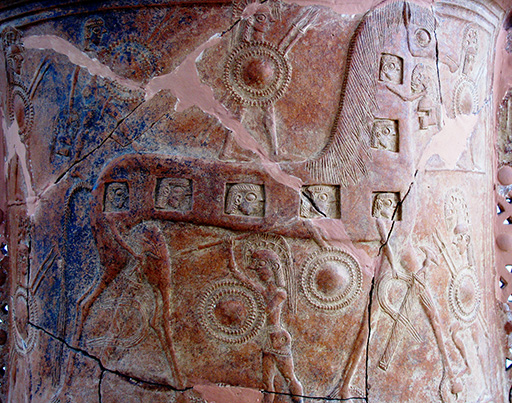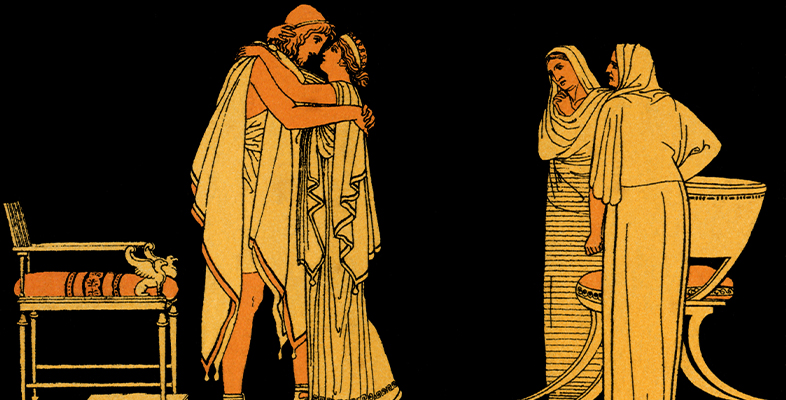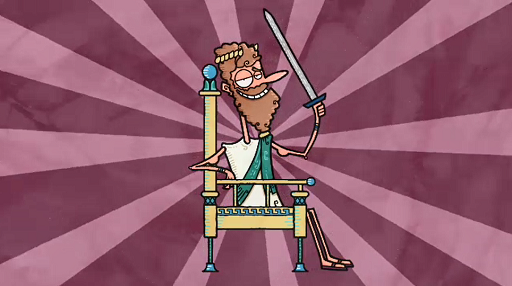2.1 Heroes in ancient Greek poetry
The heroes we encounter in Greek epic poetry may share some of the characteristics that you thought of in your answer to Question 1 of Activity 2. In particular they are all special in some way. When we think about heroes in ancient Greek texts like the Odyssey, however, they also share some other characteristics. An ancient Greek hero:
- undertakes actions (such as complex and dangerous quests or challenging battles) which are extraordinary in some way
- often has the support of one or more gods
- tends to have special powers – for example, great fighting ability, courage, or cunning – which are beyond those of ordinary humans
- is usually (although not always) of high status
- is somewhere between a god and an ordinary mortal (often heroes have a divine parent or ancestor).
How far did this list overlap with the ideas you came up with for Question 1 of Activity 2? Again, this may depend on whether you were thinking of, for example, fictional heroes or ordinary people. Also, was your idea of a hero entirely a positive one? Often today the term is seen as denoting a wholly good character. By comparison, the heroes we find in Greek myth often do things which have negative consequences for those around them. They may display extreme anger or arrogance, for example, and they aren’t always easy to like. Despite their superhuman abilities, the heroes of Greek epic are still subject to human flaws and weaknesses; among other things, epic poetry explores what it means to be human.
Activity 3
Thinking back to what you learned about Odysseus in the animation you watched for Activity 1, which elements of his character and story as it is told in the Odyssey do you think make him a hero in the ancient Greek sense? Remind yourself of the list above, and note down two or three points.
Discussion
You may have come up with something like this list:
- Odysseus undertakes extraordinary actions in the Odyssey (an extremely long journey home, and lots of fighting with monsters as well as mortal characters)
- he has the support of the goddess Athena
- he is of high status (as king of Ithaca).
Odysseus also features in several other ancient texts (for example, Athenian tragic plays of the fifth century BCE) as well as the Odyssey, and aspects of his character can be quite unappealing. He is famous for his cunning – he is credited with coming up with the idea of hiding Greek soldiers inside a wooden horse (Figure 4), which is how the Greeks were finally able to enter and conquer Troy – but this means that he can also come across as sneaky and deceptive. In the Odyssey, although he survives and returns home successfully, he shows some of his flaws along the way. For example, he is a consummate liar; this can be useful as it gets him out of some sticky situations, but we are often left wondering how far he can be trusted.

There is one other vital detail about the heroes of ancient Greek epic poetry which hasn’t yet been mentioned, and which you’ll now explore further. All of the characters who perform typically heroic deeds (in the ancient Greek sense of ‘heroic’, as outlined earlier, that is) in both the Odyssey and the Iliad are male. Odysseus is the centre of attention throughout the Odyssey – he’s usually to be found either talking about himself or being talked about by someone else – and this in itself very much encourages the audience to think of him as the poem’s hero. You’ll focus a bit more closely on his wife Penelope too, however, and ask whether we might find in her a different kind of hero.
In the next section of the course you will find out how the poet introduces both Odysseus and Penelope, and you will consider what these introductions might tell us about these two important characters.

